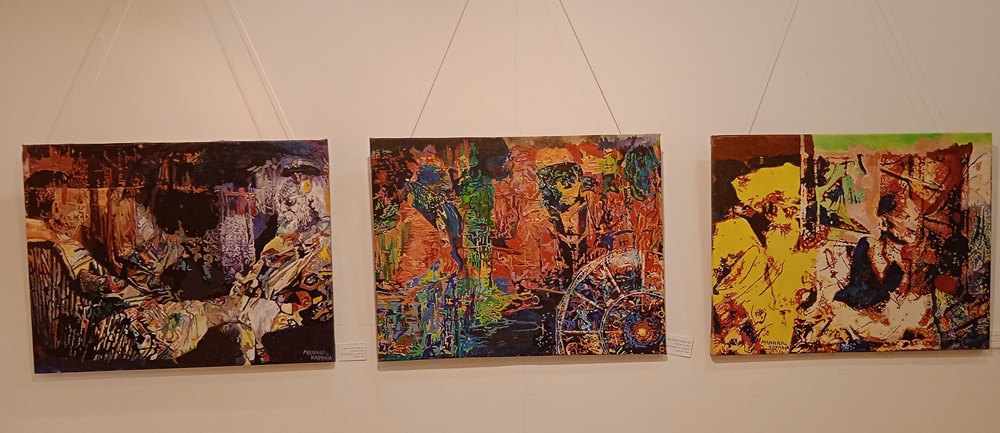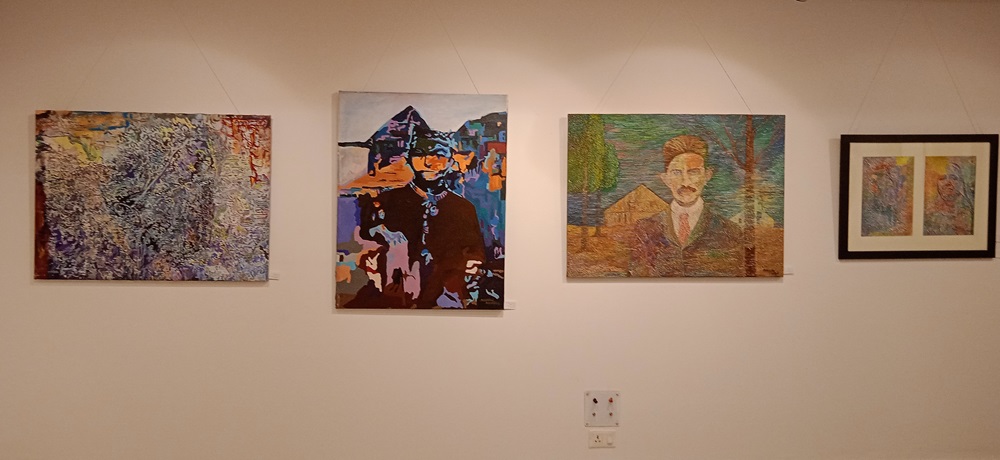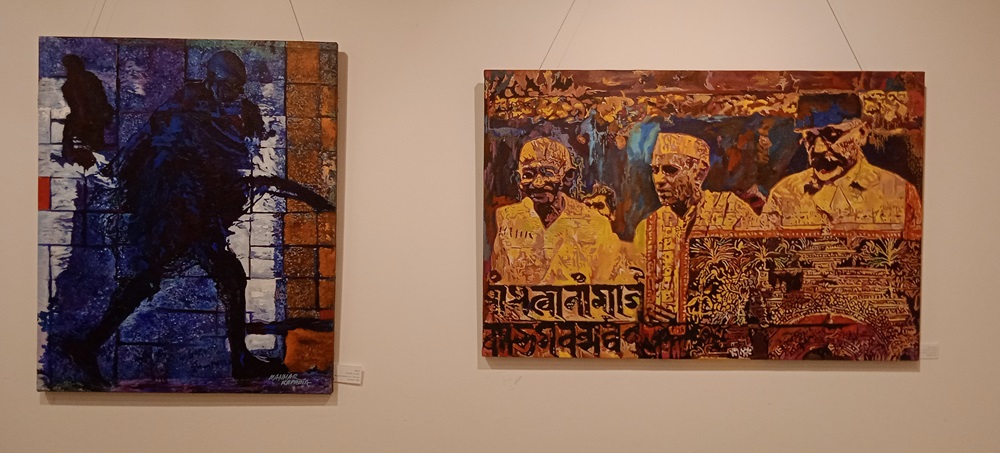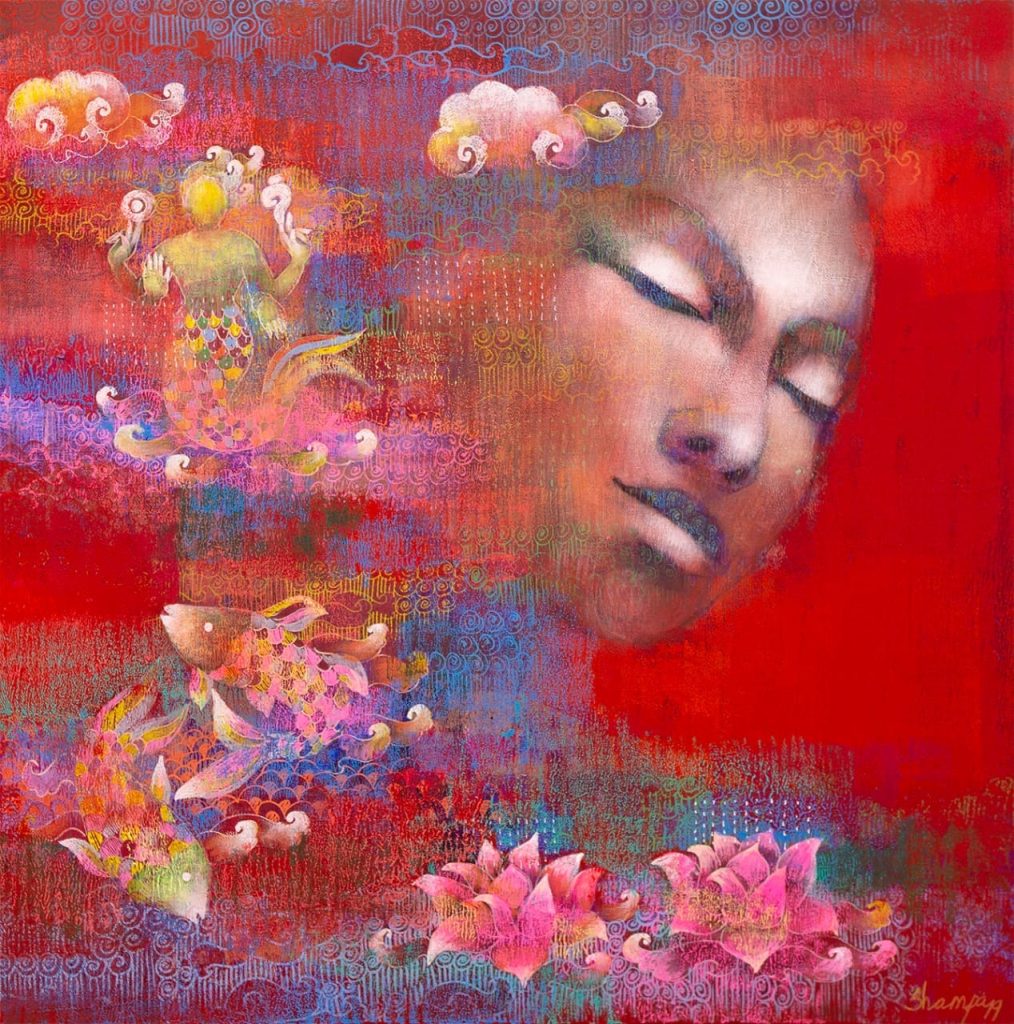An incredible display in the centre of New Delhi, the nation’s capital, will enthral art fans and Mahatma Gandhi devotees. This show, “Global Harmony; The Gandhi Code,” honours the lasting legacy of the Father of the Nation, Mahatma Gandhi, through the profound artistic expressions of Manhar Kapadia.
The lessons and values of Mahatma Gandhi are relevant now in a time of shifting socio-political environments and uncertainty around the world, and artist Kapadia brings pictorial memory into contemporary social settings. Gandhi has inspired generations worldwide with his nonviolent philosophy, social justice activism, and unrelenting dedication to truth and humanity; as mentioned by the artist, Gandhi’s teachings can catalyze fostering unity and tranquillity in a world marked by change and complexity. In this context, the artwork of Manhar Kapadia manifests as a heartfelt homage to Gandhi’s enduring principles.
Celebrated contemporary artist Kapadia, who draws heavily from Gandhian philosophy, uses his painting as a medium for social critique, introspection, and reflection on the concept of Gandhi through the decoration of colours and figurative abstraction. His paintings explore the core of Gandhi’s ideas and their tremendous influence on modern society, going beyond simple portrayal. Kapadia guides audiences on a transforming trip that delves into human awareness and exposes the road towards compassion, harmony, and collective well-being through a magnificent blending of colours, symbols, and dynamic imagery.
Through his artistic oeuvre, Kapadia investigates the uncharted territory of a great mind who was nonviolent throughout his life and dug into the thematic complexities and logical foundations of Gandhian concepts. Each painting demonstrates Kapadia’s deep comprehension of Gandhi’s legacy and its applicability in the contemporary world, from vivid portraits that capture the spirit of the man to provocative compositions addressing urgent societal challenges.

Within the vibrant realm of Manhar Kapadia’s artistic creations, hues unite with morality, and the everlasting counsel of Mahatma Gandhi is echoed via brushstrokes. Through “Soulful Reflections,” we learn about Gandhi’s message’s enduring relevance and Kapadia’s creative genius. Beyond space and time, this message continues to inspire, educate, and alter lives.
Artistic Inspiration of Gandhi
‘Manhar Kapadia has dedicated two decades to making paintings on Gandhi and the events following his life. He constantly strives to show various expressions of Gandhi in his artworks. He is inspired by Gandhi’s deep personality, actual incidences, and messages carried by him and his memory. He also examines numerous subjects that reflect life and value to society. He uses diverse tools and techniques, such as vivid brush strokes with complex oil compositions, and the canvas becomes vibrant with hints of abstraction in a contemporary way; we can see the messages become more powerful and dynamic’, writes Arpan Kapdia in the brochure.
Indian visual artists have drawn inspiration from the renowned father of our country and leader of the independence fight, Mahatma Gandhi, for their work in various media. His enduring image, way of thinking, and influence on Indian history have all been frequently portrayed in paintings, sculptures, posters, and other visual arts.
Gandhi’s life, hardships, and ideology have all been portrayed in artwork by numerous Indian painters. Everyday paintings show Gandhi’s iconic Salt March, his contacts with ordinary people, and his nonviolent ideals. Gandhi has been included in famous works by artists such as Nandalal Bose, M.F. Husain, and Jamini Roy. Gandhi’s unusual features—his round glasses, uncomplicated clothes, and calm manner—have produced powerful images. These depictions frequently highlight his kindness and knowledge. Some painters have concentrated on expressing the humility in Gandhi’s demeanour or the intensity in his eyes.

Gandhi’s unwavering dedication to nonviolence and peace has struck a deep chord with artists who want to use their art to further understanding and harmony. His nonviolent philosophy of Ahimsa (Ahimsa) has been a significant theme in many artistic mediums, such as paintings, sculptures, books, and music. Gandhi’s enduring fight against injustice, prejudice, and oppression has served as an inspiration for artists who use various mediums to explore related themes. His support of the rights of underrepresented groups, such as women and Dalits (previously known as untouchables), has inspired artists to produce works that subvert traditional norms and advance inclusivity.
Gandhi’s philosophy of non-violence (Ahimsa) offers a potent alternative strategy to resolving disagreements. Through his paintings, Kapadia applies Gandhian principles to a world beset by internal and international problems. Around the world, nonviolent resistance has shown to be successful in various activities, including environmental activism and civil rights fights.
Through his paintings, Kapadia illustrates how Gandhi’s emphasis on social justice and equality speaks to countries struggling with prejudice, marginalization, and structural injustice. His support of the rights of underrepresented groups—such as women, Dalits, and low-income individuals—offers a framework for tackling today’s social injustices.
Mahatma Gandhi’s goals and beliefs are still present in today’s society, as demonstrated by Manhar Kapadia’s exhibition “Global Harmony: the Gandhi Code,” which is touching. In addition to honouring the legacy of the Father of the Nation, Kapadia encourages spectators to consider, ponder, and interact with the profound truths that Gandhi’s teachings embody.





